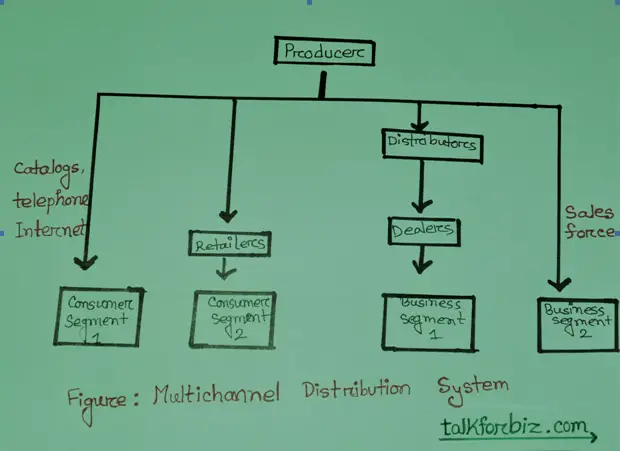People & companies interact in complex behavioral systems. Distribution channels are the more simple collection of firms. Some channel members have interacted in a more informal way, others may interact in a formal way. Moreover, the channel system doesn’t stand still for anyone. The new member comes & operates the task. Here we‘re going to see the channel behavior & how they interact within the organization.
Channel Behavior
A marketing channel interacts with the firms that they partnering with each other. Every member depends on others.
For example, A Toyota dealer depends on Toyota that Toyota designs their cars to meet the customer demand. Another hand, Toyota depends on their dealer to attract its target customers, persuade them to buy Toyota cars & provide after-sale services. Every Toyota dealer depends on their dealers to ensure good sales that’ll uphold the brand’s reputation.
It’s true that the success of individual dealers depends on how well the entire channel’s member competes with the other manufacturers.
Everyone plays a unified role in the channel, for example, the role of Oppo is to produce electronics products that have got demand in the consumer market. Demand can be made through national marketing. Best Buy’s role is to display these products in the nearest locations of consumers, provide solutions & compete for sales. This work can be more effective when everyone believes that they can do the best things.
Truly, individual channel members are responsible for overall channel success because all members work so smoothly. They properly do their duty, coordinate their activities & cooperate to bring success. Every channel member depends on others but in some cases, they work alone. Often they face some disagreements over goals, roles, and rewards generating channel conflict.
There are two types of channel conflict.
- Horizontal conflict
- Vertical conflict
Horizontal conflict is disagreements among firms at the same levels of the channel. See an example: Toyota may complain that their other dealers in the city offers high prices & they don’t maintain the actual quality.
Vertical conflict is disagreements among different levels of the same channel. See an example: Burger kings want to introduce grilled chicken but their franchises are not agreed with these statements.
Vertical marketing systems
The entire channel member performs together. Their work must be specified & if any conflict arises that should be managed technically. Conventional distribution channels consisting of one or more independent producers, wholesalers & retailers operate a separate business seeking to maximize its profits. It has lacking leadership, and power many conflicts & poor performance. In the contrast, a vertical marketing system has a unified relationship with producers, wholesalers, and retailers each other. One operates another has contracts with them. It provides channel leadership.
Corporate VMS
A vertical marketing system that has production & distribution under single ownership. It offers channel leadership through common leadership.
Contractual VMS
A vertical marketing system that operates independent firms at different levels of production & distribution systems. They join together through contractual agreements.
Franchise organization
A vertical marketing system that offers a contractual relationship with channel members called franchisors, works together in the production & distribution process.
Administered VMS
A vertical marketing system in which the production & distribution process can be done through the power & size of one party.
Horizontal marketing systems
In this system, two or more companies join together to adopt a new marketing strategy. They can combine their finances, production, and resources to accomplish their target.
Multichannel distribution systems
A distribution system in which two or more marketing channels set up a single firm to one or more customer segments.
See the below figure:

Here, a producer can sell directly to consumer segment 1 using catalogs, telephone, or through the internet. This producer can reach consumer segment 2 through retailers & so on.
These distribution systems offer some advantages like –
- Large market segment
- Expand its sales
- Market Coverage
- Competitive advantages
But this system is very hard to control. They often generate conflict & huge completion.
